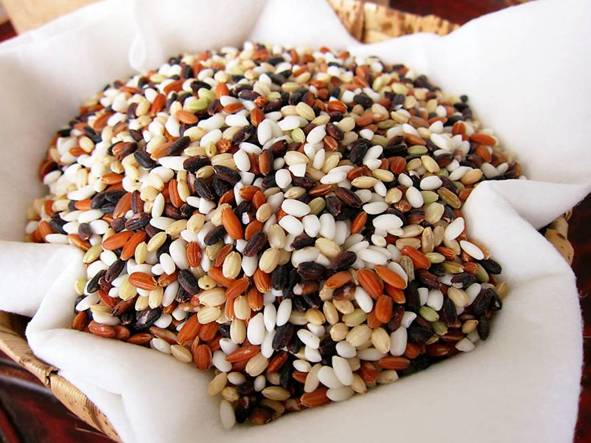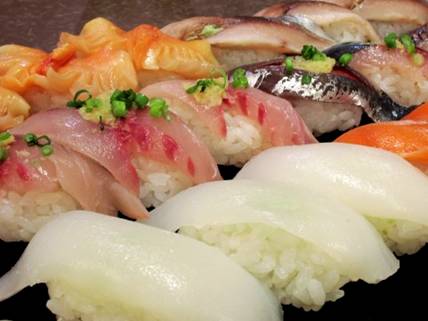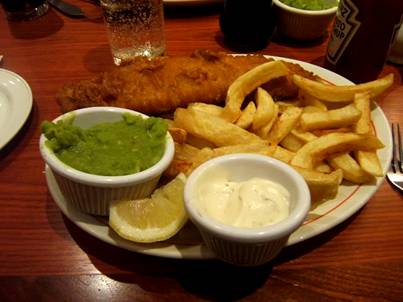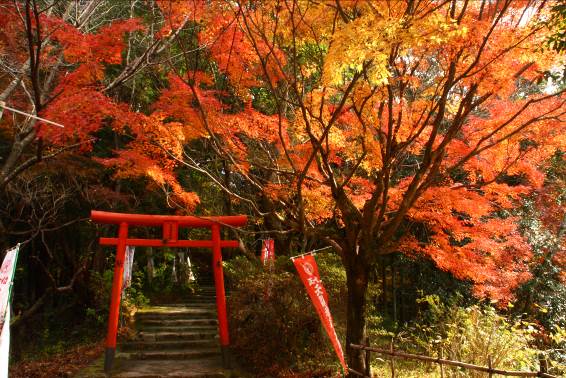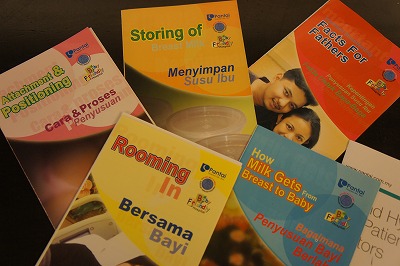Thirst for sake, green tea growing abroad
Posted on November 22, 2013 On The Japan News by The Yomiuri Shimbun
http://the-japan-news.com/news/article/0000771009
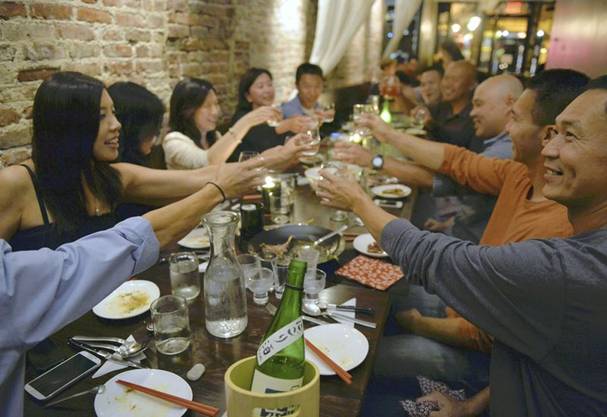
The Yomiuri Shimbun
Customers make a toast with sake at the Sakamai izakaya in New York.
The Yomiuri Shimbun
The popularity of washoku traditional Japanese cuisine—from everyday dishes to luxurious kaiseki ryori—has spread to big cities such as New York and Paris, influencing the daily diets of residents there. With washoku expected to be added to the UNESCO Intangible Cultural Heritage list in December, The Yomiuri Shimbun is examining the cuisine through the eyes, and palates, of non-Japanese people. The following are the third installments in a four-part series on washoku.
NEW YORK—“Cheers!” As this echoed around the Sakamai izakaya pub in the heart of New York, customers raised a glass of sake for a toast and then took a sip. They chomped on a selection of assorted sashimi slices ($12) and homemade tofu ($6).
A number of casual restaurants serving Japanese food and sake at reasonable prices have opened in New York over the past few years.
At Sakamai, which was opened at the end of last year by Hawaiian Natalie Graham, customers gather around a big table to eat, drink and chat.
Graham, 31, visited sake breweries across Japan and learned to not only appreciate the flavor of each sake but also its history before selecting about 80 kinds—including Nanbu Bijin and Uragasumi—for her restaurant’s shelves. Sake at her restaurant starts from $8 per glass.
“The allure of sake is that it has a refreshing flavor that wine doesn’t have. I want my customers to enjoy the aroma, too,” Graham said.
She pours sake into a wine glass instead of a standard sake cup to allow customers to more easily smell and appreciate its aroma.

The Yomiuri Shimbun
Audrey Pulvar pours Japanese tea from a traditional pot in Paris.
Chizuko Niikawa, who manages a public relations company that promotes sake in the United States, said: “Along with such luxurious washoku cuisine as kai-seki ryori and sushi, sake is already well known among gourmet food enthusiasts. But over the past couple of years, izakaya and other casual washoku restraurants have opened [in the United States], boosting the number of sake fans here.”
According to foreign trade statistics, about 14,000 kiloliters of sake was exported in 2012, double the amount exported a decade ago and marking a record high.
Nara Prefecture-based Yucho Shuzo Co.’s junmaishu (pure rice sake) Kaze no Mori became popular due to its elegant flavor and smoothness. The brand is currently sold in 11 countries.
“The domestic market has been shrinking. It’s become crucial to find markets outside Japan,” said Yoshihiko Yamamoto, Yucho Shuzo’s executive director.
Along with the popularity of sake, the export volume of green tea has also increased. The volume in 2012 was 2,351 tons, valued at about ¥5 billion.
Kyoto Obubu Tea Farms, in Wazuka, Kyoto Prefecture, which cultivates and sells Japanese tea, sells its products to 44 countries via the Internet. Its overseas sales this year have doubled that of last year.
“Exported Japanese tea costs two or three times more than black tea or coffee. But once people experience the flavor and aroma of Japanese tea, they take a keen interest in it,” said Yasuharu Matsumoto, the vice president of Kyoto Obubu Tea Farms. The company also holds seminars around the world to explain the pleasures of green tea.
In addition to tea leaves, bottled tea is sold at delis and cafes along with washoku dishes.
Part of daily life
PARIS—French TV reporter Audrey Pulvar became interested in Japanese food culture after being exposed to Japanese literature. Almost every day now, she drinks hojicha (roasted tea), sencha (steeped tea) or matcha (fine green tea).
“The washoku I had in Japan was made with quality ingredients, and perfectly done,” she said. “Whenever I eat sushi and drink tea in Paris, I can’t help but praise the sophistication of Japanese food culture.”
Along with the washoku boom, the export of common Japanese ingredients has grown. Soy sauce maker Kikkoman’s affiliate company, which sells Japanese food wholesale, receives orders for high-grade frozen fish, tofu, shirataki noodle konnyaku and even dorayaki pancakes with red bean filling. For people overseas, washoku seems to no longer be just another kind of ethnic food.
Original Article: The Japan Times by Yomiuri Shimbun
http://the-japan-news.com/news/article/0000771009

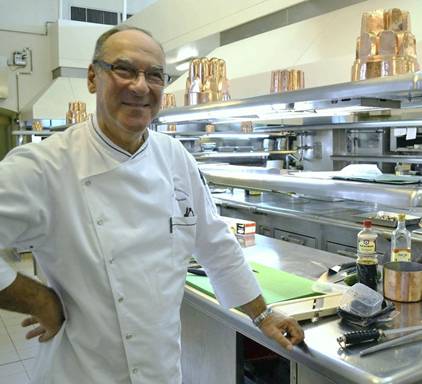
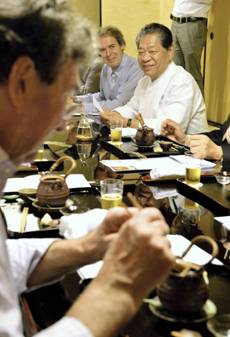
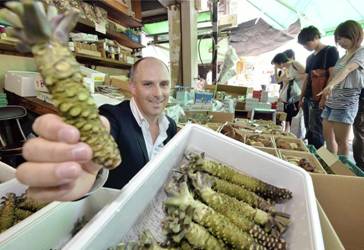
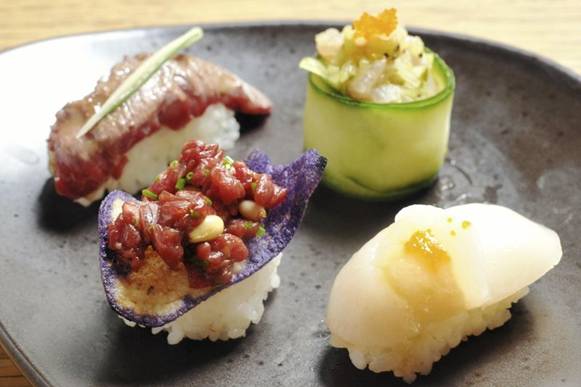
 Sushi Shop serves unique sushi catering to French tastes using ingredients such as foie gras, cheese and mango.
Sushi Shop serves unique sushi catering to French tastes using ingredients such as foie gras, cheese and mango.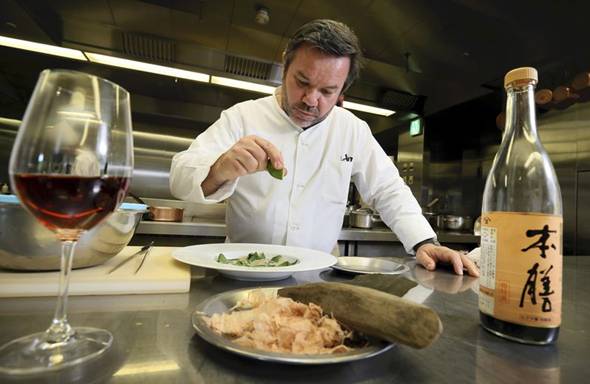
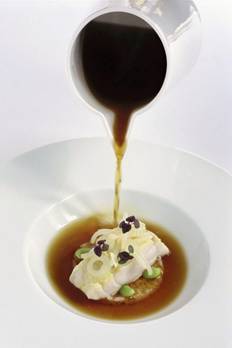 In another dashi recipe, he adds cream to reduced dashi and soy sauce to make a special sauce.
In another dashi recipe, he adds cream to reduced dashi and soy sauce to make a special sauce. Regularly eaten superfoods, together with exercise, weight-control, stress reduction and healthy sleep habits, can help you live a long and healthy life, according to Steven G. Pratt, MD of Scripps Memorial Hospital in California. Dr. James W. Forsythe says, “Phytochemical-rich foods do play an important role in strengthening the immune system. It’s important to aim for at least 2 to 3 services of fruits and 3 to 5 servings of vegetables every day.”
Regularly eaten superfoods, together with exercise, weight-control, stress reduction and healthy sleep habits, can help you live a long and healthy life, according to Steven G. Pratt, MD of Scripps Memorial Hospital in California. Dr. James W. Forsythe says, “Phytochemical-rich foods do play an important role in strengthening the immune system. It’s important to aim for at least 2 to 3 services of fruits and 3 to 5 servings of vegetables every day.” A hot cup of tea can be comforting to your body, when sipped on a cold winter day. Black, green, white and oolong teas all contain polyphenols. Tea ranks at least as high or higher than many vegetables and fruits in the ORAC score, a score that measures antioxidant properties of plant-based foods. Herbal tea, properly termed, tisane, does not have these particular health-promoting properties.
A hot cup of tea can be comforting to your body, when sipped on a cold winter day. Black, green, white and oolong teas all contain polyphenols. Tea ranks at least as high or higher than many vegetables and fruits in the ORAC score, a score that measures antioxidant properties of plant-based foods. Herbal tea, properly termed, tisane, does not have these particular health-promoting properties.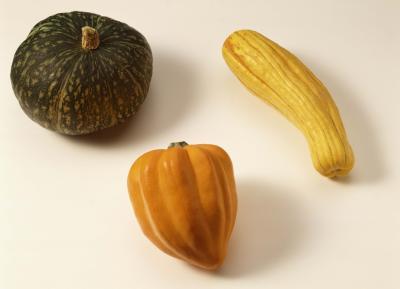 Hard, winter squash provides a valuable source of vitamin C, as well as folic acid, magnesium and potassium. Winter squash varieties are all quite high in fiber and contain generous amounts of the antioxidant carotene, which is beneficial to your immune system.
Hard, winter squash provides a valuable source of vitamin C, as well as folic acid, magnesium and potassium. Winter squash varieties are all quite high in fiber and contain generous amounts of the antioxidant carotene, which is beneficial to your immune system.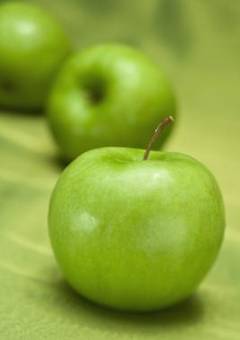 Apples are a considerable source of potassium, fiber and disease-fighting antioxidants, such as polyphenols and vitamin C to boost your immune system. According to Steven G. Pratt, MD, evidence suggests it is the complex synergistic interactions between the various elements that make apples so healthful. Eat a wide variety of apples with the skin in tact. A study in “Journal of Agriculture and Food Chemistry” confirmed that the concentration of antioxidants in an apple’s skin is several times greater than in its flesh.
Apples are a considerable source of potassium, fiber and disease-fighting antioxidants, such as polyphenols and vitamin C to boost your immune system. According to Steven G. Pratt, MD, evidence suggests it is the complex synergistic interactions between the various elements that make apples so healthful. Eat a wide variety of apples with the skin in tact. A study in “Journal of Agriculture and Food Chemistry” confirmed that the concentration of antioxidants in an apple’s skin is several times greater than in its flesh. Broccoli is a cruciferous vegetable that is rich in isothiocyanates, a family of phytochemicals: glucoraphanin, gluconasturtiian and glucobrassicin. This trio is able to support all steps in your body’s detox process, which includes activation, neutralization, and elimination of harmful contaminants.
Broccoli is a cruciferous vegetable that is rich in isothiocyanates, a family of phytochemicals: glucoraphanin, gluconasturtiian and glucobrassicin. This trio is able to support all steps in your body’s detox process, which includes activation, neutralization, and elimination of harmful contaminants.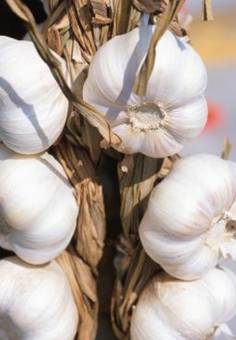 Technologies/Photos.com/Getty Images
Technologies/Photos.com/Getty Images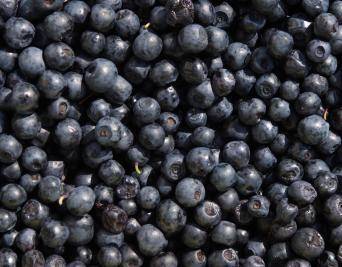 Blueberries are a rich source of antioxidants like Anthocyanins, vitamin C, vitamin A, copper, selenium, zinc, iron, B complex and vitamin E. Among their many health benefits, blueberries will boost your immunity and prevent infections.
Blueberries are a rich source of antioxidants like Anthocyanins, vitamin C, vitamin A, copper, selenium, zinc, iron, B complex and vitamin E. Among their many health benefits, blueberries will boost your immunity and prevent infections.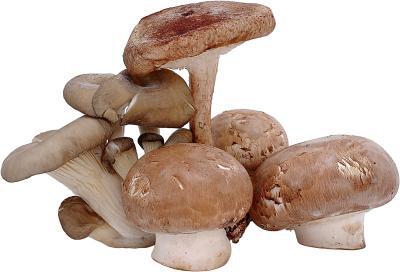 Shiitake, maitake, and reishi mushrooms contain beta-glucans. These are powerful immune boosting components that are effective in stimulating the immune system to fight cold and flu. These mushrooms can be eaten whole or are also available in supplement form.
Shiitake, maitake, and reishi mushrooms contain beta-glucans. These are powerful immune boosting components that are effective in stimulating the immune system to fight cold and flu. These mushrooms can be eaten whole or are also available in supplement form. Probiotic bacteria is found in yogurt and kefir. Probiotics help maintain balance in the gastrointestinal tract by staving off unwanted yeast and bacteria. According to Dr. James W. Forsythe, probiotics can help to prevent and reduce the length and severity of the common cold.
Probiotic bacteria is found in yogurt and kefir. Probiotics help maintain balance in the gastrointestinal tract by staving off unwanted yeast and bacteria. According to Dr. James W. Forsythe, probiotics can help to prevent and reduce the length and severity of the common cold. Highlights heart health, urinary and gastrointestinal tract and other metabolic benefits
Highlights heart health, urinary and gastrointestinal tract and other metabolic benefits